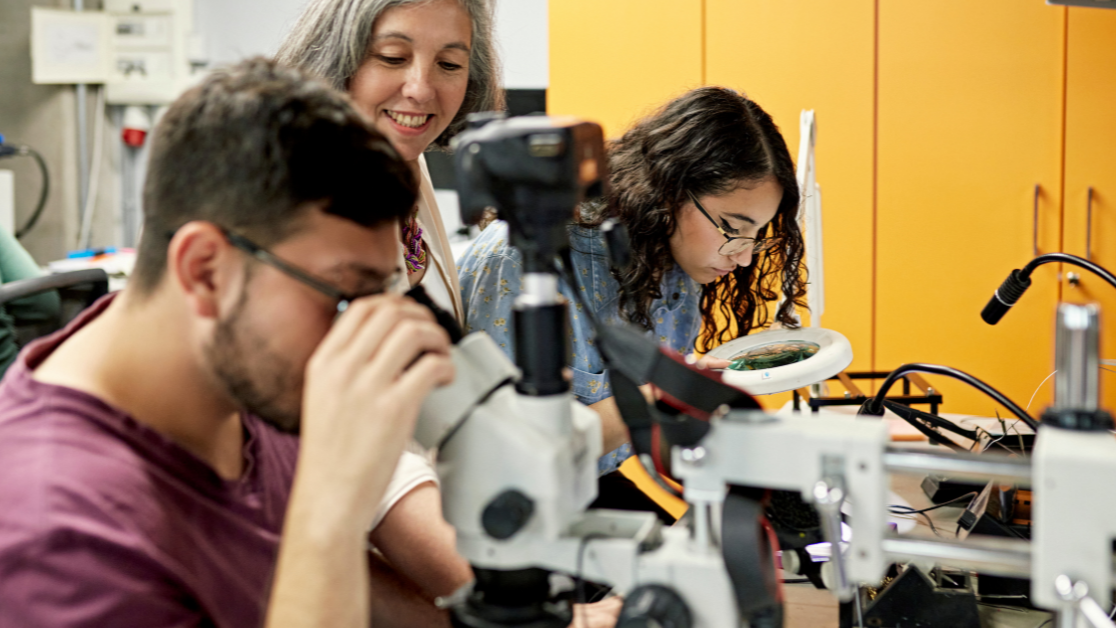At ASA, we talk a lot about the importance of strong, early work-based learning experiences for kids. The other side of that conversation, though, is credentialing. What happens on the back end of a work-based learning experience, and what the learner walks away from the experience with, is every bit as important as the experience itself. The credential gives a person the power to translate their learning into something tangible and valuable to employers. From competency-based learning and micro credentials to badges and certificates – how credentials are awarded, obtained, and vetted is a hot topic and one to which educators, students, and employers alike should be paying attention.
To dive into this a bit more, ASA’s Julie Lammers sat on a panel discussion late last year with a group of thought leaders from around the world of credentialing and work-based learning, expertly moderated by Nate McClennen of Getting Smart. These innovators spent a jam-packed 45 minutes trying to capture the nuance and complexity of the credentialing conversation. In the interest of brevity, I’ll share with you below a brief overview of each person’s organization’s mission, as well as what I felt to be the most important “sound bites” from their respective contributions.
Anna Hennes, the Kauffmann Foundation
Anna’s organization is a grant-awarding foundation that believes in the connection between “more opportunities and stronger communities” with a focus on entrepreneurially focused economic development. They aim to help employers (and relatedly, educators and students) recognize market value asset attainment, and understand the many benefits of hiring from a real-world learning framework.
She explained that students need a way to capture what they’re doing and what they’ve done so they can send a signal to employers down the road that their experiences have been valuable and given them some real-world benefit. And she believes data will be an increasingly big part of proving it.
“The critical lever to pull is using technology and data to demonstrate the potential of skills-based hiring, which is the other side of the competency-based education coin. I see those two things moving closer in alignment, and that gives me a lot of hope for how we can take degree requirements off the job. I see a lot of progress in that area.”
Lisa Dughi, NAF
NAF is a national education nonprofit that works both with the education side and the business side to ensure students have access to work-based learning programs that give them real skills and competencies that are transferable, stackable, and connected to what they care about. Lisa explained that NAF is working in underserved communities to help boost the local talent pool while creating equity in the space.
“We’ve made an intentional shift in the way we talk to our business partners. We explain that this isn’t just philanthropy, it’s a business investment. Our corporate partners are investing in a workforce development strategy. And the altruistic part is that we do help to fill some of the diversity, equity, and inclusion goals so we’re addressing more than just a talent pipeline.”
Andy Hepburn, GPS Education
GPS Education is a nonprofit in Wisconsin that has spent twenty years running a high school manufacturing youth apprenticeship program that reaches around 200 students every year, and that offers wraparound support services to ensure students’ success. They are “on a journey to change the lives of thousands of students, validate technical career pathways as a viable career choice, and provide students and their communities a pathway to prosperity.” Andy believes that the challenge at-hand is trying to get employers to leverage the industry credentials they say they support.
“We’ve been very effective in evaluating and providing opportunities for students. Credit for prior-learning lets people evaluate what they did in the workplace and then actually count that experience – something that happened outside the classroom – towards a credential.”





